






Yala National Park Safaris – Half-Day Adventure
Immerse yourself in the breathtaking wilderness of Yala National Park, a sanctuary for wildlife lovers and nature enthusiasts alike. Our half-day safari begins at the break of dawn, with departures timed to reach the park entrance just before 6:00 AM, or in the afternoon at 2:00 PM, ensuring optimal chances to witness the park’s vibrant wildlife.
CCT Sri Lanka offers a range of safari experiences, including both full-day and half-day adventures. For solo travelers or couples, our shared safari jeeps provide an affordable yet thrilling option to explore Yala’s iconic landscapes and diverse fauna. Shared safaris depart early in the morning or occasionally in the afternoon, offering flexibility without compromising the excitement.
For those seeking a deeper thrill, we organize specialized journeys to Block II and Kebiliththa, known for their raw, untamed beauty. These expeditions require some preparation and are always conducted with two jeeps for safety, adding an extra layer of adventure to your experience.
Contact CCT Sri Lanka to plan your perfect safari and make unforgettable memories in the heart of Yala’s wilderness.
About Yala National Park
Yala is Sri Lanka’s second-largest and most-visited national park, located in the southeastern corner of the island. Spanning five distinct blocks, it offers a rich diversity of landscapes, flora, and fauna. Visitors typically explore Blocks I and II, which are teeming with wildlife and offer breathtaking vistas.
- Topography: Predominantly flat terrain, gently rising to 100–125 meters in the park’s interior.
- Water Sources: After the northeast monsoon, water is plentiful. During the dry season, the Kumbukkan Oya and Menik River sustain the park’s ecosystems.
- Ecosystems: Yala features a variety of habitats, including moist and dry monsoon forests, semi-deciduous forests, thorn forests, grasslands, marshes, lagoons, marine wetlands, and sandy beaches.
Wildlife Highlights
Yala is renowned for its incredible biodiversity:
- Mammals: Home to 44 species, including elephants, sloth bears, and the park's most famous resident—the leopard. Yala boasts the highest density of leopards in the world.
- Birdlife: A paradise for birdwatchers, with 215 recorded species, ranging from migratory birds to endemic varieties.
Notable Water Bodies
The park features several lagoons and tanks that serve as vital water sources for its inhabitants:
- In Block I: Buthuwa Lagoon.
- In Block II: Pilinnawa, Mahapothana, and Pahalapothana lagoons.
- Elsewhere: Maha Seelawa and Uraniya tanks.
Seasonal Closures
Please note that Yala National Park is typically closed from September 1st to October 15th due to drought conditions and the breeding season, ensuring the preservation of its delicate ecosystems.
Yala National Park Safaris - Half-Day
Best season: Jan - Mar & May - Aug
Available: Daily
Arranging time needed: 1 day
Hottest month: April & May
Best time to start: 6 AM and 2 PM
Starting point: Your accommodation - Select from the drop down menu
Park entry point: Block 1 - Palatupana Gate II or Katagamuwa Gate I
Safaring time: 4 hrs
General & specific restrictions: Do not leave plastics behind / Please do not feed wild animals.
Price includes: Safari jeep / Trekker (most likely to be the jeep driver) / Naturalist (Optional) / Lunch / Bottled water / First aid kit / All Gov taxes
Child price: Aged 6 - 12 is considered a child / Aged 0 - 6 is free of charge
Feedback us: Our drivers and service providers are advised not to promote any other activities or nudge you for shopping. Please leave your feedback on Google.
Optional: A well-spoken naturalist can be arranged with an additional fee - 25 USD.
You may bring: Cardigan for morning breeze / Hat and sun glass / Sun cream / Camera
We love holiday planning!
Recent reviews
-
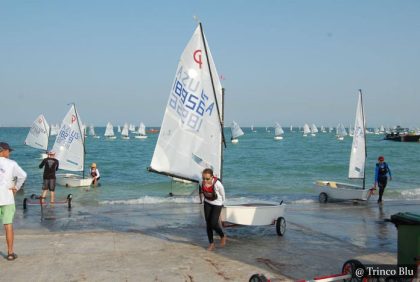 Sailing Course in Sri Lanka
Rated 4 out of 5by Michiel le Roux
Sailing Course in Sri Lanka
Rated 4 out of 5by Michiel le Roux -
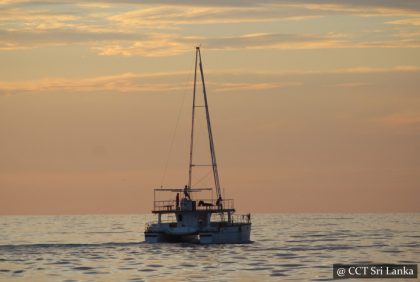 Colombo Port City Charter Sailing - 3 or 5 hrs - For Sri Lankans
Rated 5 out of 5by Ravichandran thanus
Colombo Port City Charter Sailing - 3 or 5 hrs - For Sri Lankans
Rated 5 out of 5by Ravichandran thanus -
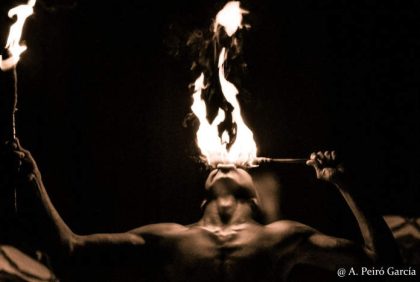 Reserve Your Seat Kandy Esala Perahera
Rated 5 out of 5by Julien Privey
Reserve Your Seat Kandy Esala Perahera
Rated 5 out of 5by Julien Privey -
 Reserve Your Seat Kandy Esala Perahera
Rated 5 out of 5by Nanfa
Reserve Your Seat Kandy Esala Perahera
Rated 5 out of 5by Nanfa -
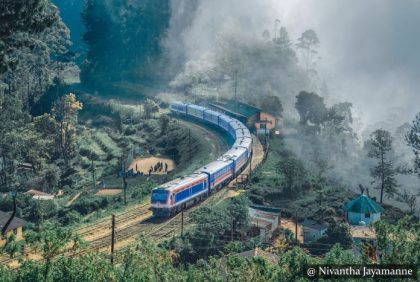 Book Train Tickets Online in Sri Lanka
Rated 5 out of 5by Vedanth Sameer Rao
Book Train Tickets Online in Sri Lanka
Rated 5 out of 5by Vedanth Sameer Rao -
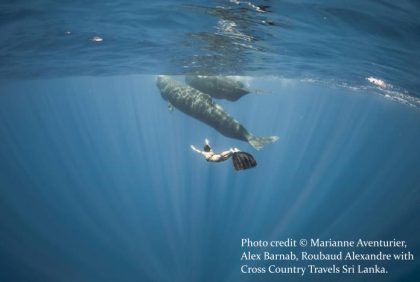 Whale Watching in Sri Lanka - Shared Luxury Yacht
Rated 5 out of 5by Julie
Whale Watching in Sri Lanka - Shared Luxury Yacht
Rated 5 out of 5by Julie -
 Colombo Port City Charter Sailing - 3 or 5 hrs - For Foreign Guests
Rated 5 out of 5by Sathsarani
Colombo Port City Charter Sailing - 3 or 5 hrs - For Foreign Guests
Rated 5 out of 5by Sathsarani -
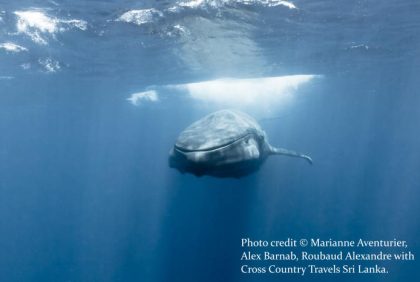 Snorkeling With Whales
Rated 5 out of 5by Arne
Snorkeling With Whales
Rated 5 out of 5by Arne -
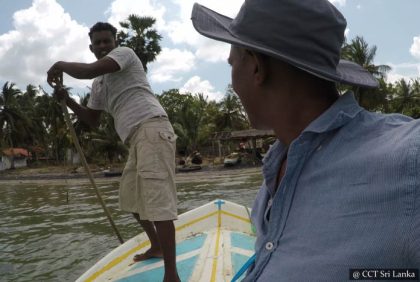 Speedy 10-Minute Boat Ride - Wilpattu to Kalpitiya
Rated 5 out of 5by Ada
Speedy 10-Minute Boat Ride - Wilpattu to Kalpitiya
Rated 5 out of 5by Ada
Birds of Yala National Park
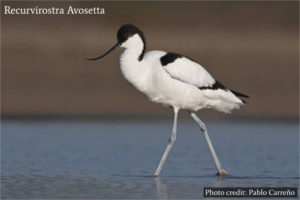
Yala National Park is a paradise for bird enthusiasts and one of the 70 Important Bird Areas (IBAs) in Sri Lanka. It is home to an impressive 215 bird species, with around 90 being waterbirds. Nearly half of these waterbirds are migratory, adding seasonal diversity to the park's avian population. Here's a closer look at the remarkable birdlife you can encounter in Yala:
Resident Birds
Yala hosts a vibrant variety of resident bird species, including striking waders, raptors, and colorful forest dwellers. Some notable residents are:
- Black-necked Stork (Ephippiorhynchus asiaticus)
- Yellow-wattled Lapwing (Vanellus malabaricus)
- Great Stone Plover (Esacus recurvirostris)
- Lesser Whistling Duck (Dendrocygna javanica)
- Indian Shag (Phalacrocorax fuscicollis)
- Black-headed Ibis (Threskiornis melanocephalus)
- Painted Stork (Mycteria leucocephala)
- Spotted-billed Pelican (Pelecanus philippensis)
- Indian Peafowl (Pavo cristatus)
- Crested Serpent Eagle (Spilornis cheela)
- White-bellied Sea Eagle (Haliaeetus leucogaster)
- Blue-tailed Bee-eater (Merops philippinus) (partly migratory)
Migratory Birds
Yala serves as a critical refuge for numerous migratory birds during the winter months. These species travel vast distances, adding a spectacular seasonal element to the park’s birdlife:
- Northern Pintail (Anas acuta)
- White-winged Tern (Chlidonias leucopterus)
- Greater Flamingo (Phoenicopterus roseus)
- Eurasian Curlew (Numenius arquata)
- Marsh Sandpiper (Tringa stagnatilis)
- Indian Paradise Flycatcher (Terpsiphone paradisi paradisi)
- European Golden Oriole (Oriolus oriolus)
- Black Stork (Ciconia nigra)
Endemic Birds
Yala also shelters some of Sri Lanka’s precious endemic birds, unique to the island:
- Ceylon Grey Hornbill (Ocyceros gingalensis)
- Sri Lanka Junglefowl (Gallus lafayetii) (Sri Lanka's national bird)
- Sri Lanka Wood Pigeon (Columba torringtonii)
- Crimson-fronted Barbet (Megalaima rubricapillus)
- Black-capped Bulbul (Pycnonotus melanicterus)
- Brown-capped Babbler (Pellorneum fuscocapillus)
A Birder's Paradise
With its rich diversity of resident, migratory, and endemic species, Yala National Park offers bird enthusiasts an unparalleled opportunity to observe birds in their natural habitats. Whether you’re watching a majestic Crested Serpent Eagle soar above the canopy or spotting the vibrant hues of a Sri Lanka Junglefowl on the forest floor, every moment is a testament to the park’s avian treasure trove.
Mammals of Yala National Park
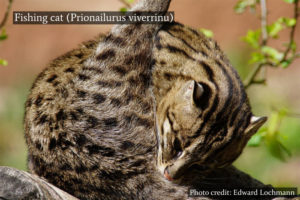
Yala National Park is a sanctuary for a diverse range of mammals, with 44 recorded species, including iconic giants like elephants, elusive predators like leopards, and rare creatures like the fishing cat. Here’s a glimpse into the fascinating mammalian wildlife of Yala:
Sri Lankan Elephant (Elephas maximus maximus)
- The Sri Lankan elephant, an endemic subspecies, is one of Yala's most majestic residents.
- The park is home to a herd of approximately 300–350 elephants, part of Sri Lanka’s total population of 2,500–4,000 elephants.
- Herds are typically composed of 12–20 individuals, led by a matriarch—the oldest and wisest female.
- Elephants play a vital role in the ecosystem, dispersing seeds and maintaining forest health.
Sri Lankan Leopard (Panthera pardus kotiya)
- The Sri Lankan leopard, another endemic subspecies, is Yala's apex predator.
- Yala boasts the highest density of leopards in the world, making it one of the best places to spot this reclusive big cat.
- Known locally as "Kotiya," the leopard is a solitary and stealthy hunter.
- Despite its prominence in Yala, it remains one of the least-studied leopard populations globally.
Sloth Bear (Melursus ursinus inornatus)
- The sloth bear, Yala’s only bear species, is an elusive and fascinating inhabitant.
- Primarily termite-eating, this shaggy-coated bear is native to the Indian subcontinent.
- Though shy, it is a remarkable sight for lucky visitors.
Endemic Mammals
Yala is home to several mammals unique to Sri Lanka, showcasing the island's rich biodiversity:
- Toque Macaque (Macaca sinica)
- Wild Water Buffalo (Bubalus bubalis)
- Golden Palm Civet (Paradoxurus zeylonensis)
Endangered Mammals
Some of Yala’s mammals are critically endangered and require careful conservation efforts:
- Red Slender Loris (Loris tardigradus)
- Fishing Cat (Prionailurus viverrinus)
A Wildlife Spectacle
Yala National Park’s mammalian diversity highlights its status as a premier wildlife destination. From the commanding presence of the Sri Lankan elephant to the stealthy elegance of the leopard, Yala offers an unparalleled opportunity to witness Sri Lanka’s natural heritage up close. Every visit contributes to the protection of these remarkable creatures, ensuring their survival for generations to come.
Other Wildlife in Yala National Park
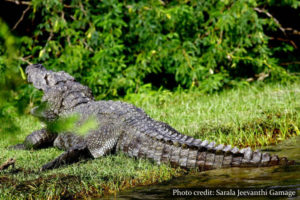
Beyond its iconic mammals and birds, Yala National Park boasts an incredible diversity of reptiles, amphibians, fish, and invertebrates, making it a hotspot for nature enthusiasts. Here's a closer look at the park’s lesser-known inhabitants:
Reptiles
Yala is home to 47 recorded reptile species, six of which are endemic to Sri Lanka. These include:
- Sri Lankan Krait (Bungarus ceylonicus)
- Boulenger's Keelback (Xenochrophis asperrimus)
- Sri Lankan Flying Snake (Chrysopelea taprobanica)
- Painted-lip Lizard (Calotes ceylonensis)
- Wiegmann's Agama (Calotes nigrilabris)
- Bahir's Fan-throated Lizard (Sitana bahiri)
The park's coastline also attracts all five species of globally endangered sea turtles:
- Leatherback Turtle (Dermochelys coriacea)
- Olive Ridley Turtle (Lepidochelys olivacea)
- Loggerhead Turtle (Caretta caretta)
- Hawksbill Turtle (Eretmochelys imbricata)
- Green Turtle (Chelonia mydas)
In addition, Yala's waterways are home to Sri Lanka’s two breeding crocodile species:
- Mugger Crocodile (Crocodylus palustris)
- Saltwater Crocodile (Crocodylus porosus)
Amphibians
The park hosts 18 species of amphibians, with two being endemic to Sri Lanka:
- Atukorale’s Toad (Bufo atukoralei)
- Kelaart’s Dwarf Toad (Adenomus kelaartii)
These amphibians thrive in Yala's wetlands and seasonal pools.
Fish
The park’s lagoons and water bodies support 21 freshwater fish species, including:
- Mozambique Tilapia (Oreochromis mossambicus)
- Filament Barb (Dawkinsia filamentosa)
- Olive Barb (Puntius sarana)
- Pseudetroplus sp.
- Ceylon Logsucker (Garra ceylonensis)
Invertebrates
Yala is also rich in invertebrate species, including crabs, prawns, and a stunning array of butterflies. Notable butterfly species include:
- Common Bluebottle (Graphium sarpedon)
- Common Lime Butterfly (Papilio demoleus)
- Crimson Rose (Pachliopta hector)
- Common Jezebel (Delias eucharis)
- Common Mormon (Papilio polytes)
A Biodiversity Wonderland
Yala National Park is a treasure trove of life, from its reptiles basking in the sun to the delicate flutter of butterflies in its lush vegetation. The park’s rich tapestry of species not only enhances its ecological importance but also offers visitors an unparalleled opportunity to experience the wonders of Sri Lanka’s natural heritage.
Sithulpawwa Temple – The Hill of the Quiet Mind
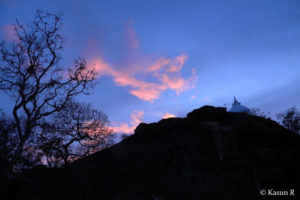
Nestled in the heart of the Yala Sanctuary, Sithulpawwa Temple is a revered ancient Buddhist monastery steeped in history and tranquility. Built by King Kavantissa during his reign (140–100 BC), this sacred site has been a place of meditation and worship for over two millennia.
The name Sithulpawwa is derived from the term “Chiththala Pabbatha,” which translates to “the hill of the quiet mind.” This fitting name reflects the serene and contemplative atmosphere of the temple.
What to See at Sithulpawwa Temple
A visit to Sithulpawwa Temple reveals a treasure trove of ancient relics and structures:
- Buddha Statues and Ruins: Remnants of ancient Buddha statues and the ruins of a vast Buddhist monastery can be explored.
- Stupas: A large number of stupas, including the main stupa, which majestically crowns the rocky summit of the hill.
- Rock Inscriptions: Ancient inscriptions carved into stone, providing glimpses into Sri Lanka's rich Buddhist heritage.
- Cave Temple Paintings: A cave temple adorned with intricate paintings believed to date back to the 3rd century BC.
Getting to Sithulpawwa Temple
The temple is easily accessible from nearby towns:
- 28 km from Tissamaharama
- 17 km from the pilgrimage town of Katharagama
The drive to Sithulpawwa offers a unique journey through the wilderness of Yala, enhancing the sense of spiritual retreat as you approach this sacred destination.
A Place of Reflection and History
Sithulpawwa Temple stands as a testament to Sri Lanka's ancient Buddhist traditions and its harmonious relationship with nature. Whether you seek spiritual solace, historical exploration, or a moment of peace, this iconic site offers an unforgettable experience steeped in cultural and spiritual significance.


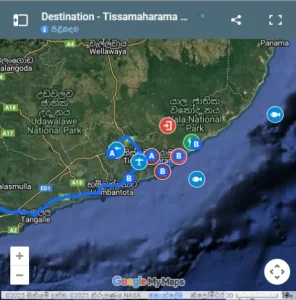
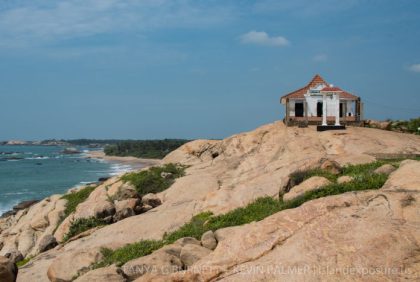
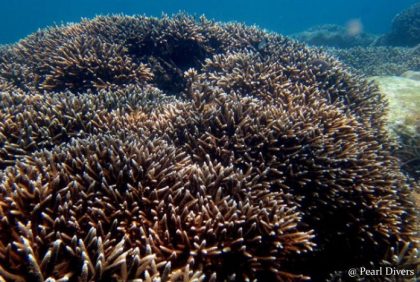

Reviews
There are no reviews yet.